This video will be eternal or widely-expandable capacity of the DVR (NVR / DVR)
The problem with the lack of space for storing the archive in digital / network video recorders is as old as the world. There are many options for solving it, but there is always a specific
limitation: “budget”. As a result, our desires to keep archives for 30-60 (and this is almost 30-40Tb) days turn into a "pipe dream". Ideally, I would like the archive to be backed up automatically without a chronic dilemma whether there will be enough space for the next backup on a USB-HDD or not. The presence of this dilemma is especially annoying, since in the long run the process can turn into a lottery: you believe that the backup passed, but it did not start as the external single disk was full for a long time.
The second side of the problem: in most DVRs, a fault-tolerant storage (RAID) system is simply not provided, and each disk lives “its own life” for good luck, until it leaves it, taking with it part and even the entire video archive. For some reason, the manufacturers of NVR / DVR consider RAID a redundant function even for a professional entry-level and mid-range DVR, probably believing that the video archive is of little value. However, its low value and recording in a circle in a small time loop is good exactly as long as everything is smooth on the object. And when “no”, then, as a rule, there is no “trial” because there is no evidence left either - it was rewritten in the next cycle or lost due to the failure of one of the disks. Even according to my personal statistics, hard drives are one of the most vulnerable parts of NVR and DVR.
Yes, in older NVR models with 8 or more disks, we will most likely see RAID and redundancy features. BUT! even in this case, the question remains where to reserve, for example, an 8-disk NVR? It is possible on an 8-disk NAS and here the question of price!
Despite the general problem of hardness of hardness and the high cost of multi-disk network storages, an affordable and quite practical and simple solution was nevertheless found. It was enough just to explore alternatives from non-frontal options.
This decision will be discussed later, using the example of working with the popular NVR HIKVISION DS-7604NI-SE . Our NVR will play the role of a locomotive, and the capacity expansion module (DAS) of the CFI B8283JDGG company as the composition of cars with disks (8 disk model) with support for simple and convenient hardware RAID.
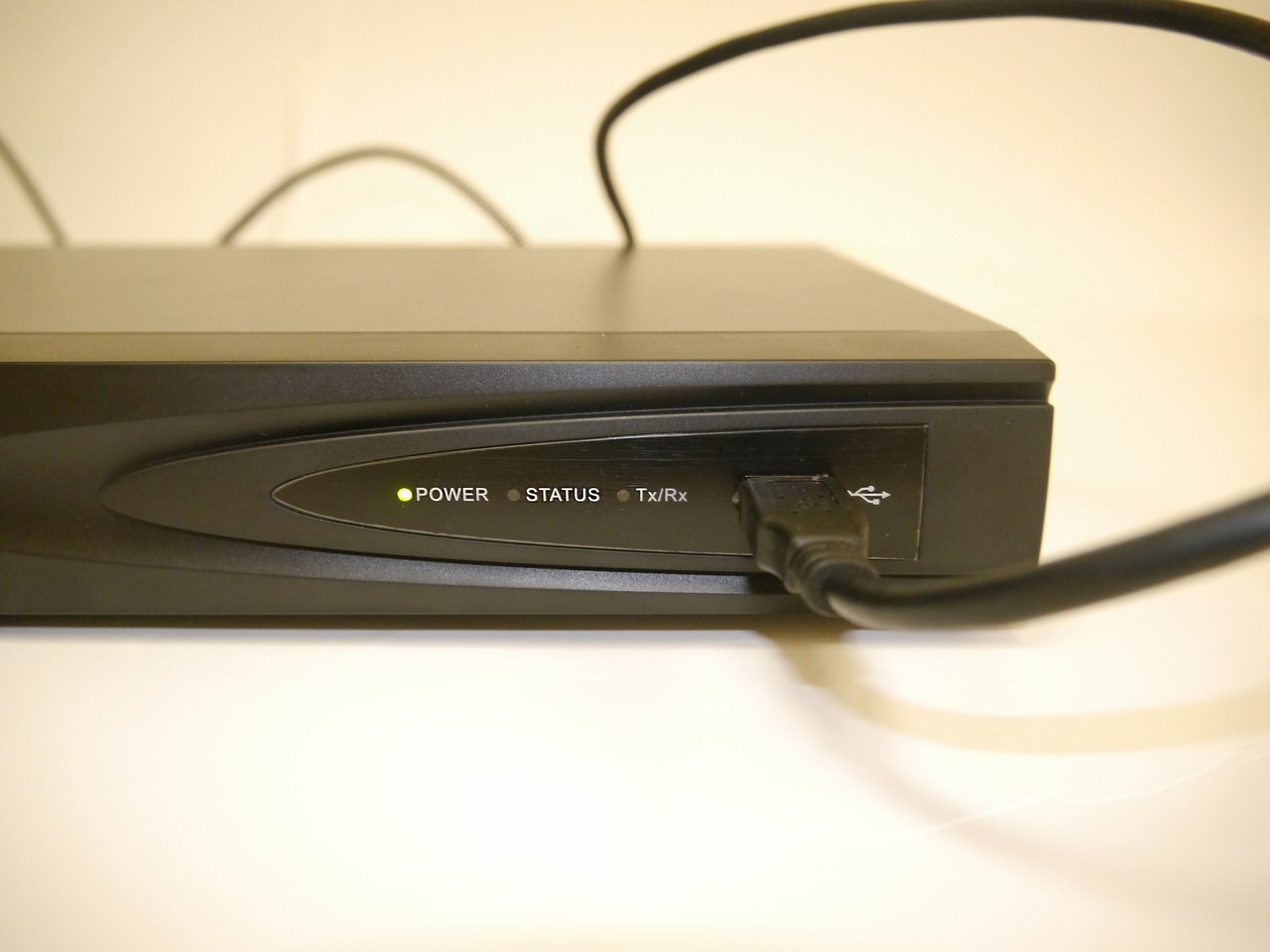
This NVR is a very typical product, the use of which can probably be identified with the concept of "NVR in general", assuming that any other will work with external RAID-capacity similarly or similarly.
In general, I learned about CFI DAS not so long ago, partly from other people's posts on habr, partly studying the question of whether there can be something from USB / eSATA for more than 2 disks. It turned out that there are such devices.
A field note for those who are interested: DAS (Direct Attached Storage) is a generalized concept of a class of devices and, at the same time, a technology for connecting a drive directly to a host device to increase storage capacity. When connected to an NVR, DVR, PC, or a DAS server with RAID support, it actually functions sooooo big and, I want to believe, soooooo secure flash drive. CFI B8283JDGG is based on a hardware RAID controller. My 8-disk DAS in the CFI implementation (Taiwan office) is actually a SATA basket with an integrated power supply and electronics for port animation, hardware support for RAID of different levels (by the way with caching ) and eSATA and USB 3.0 port services. Actually using them, the drive is connected to the hosts.
And now the arguments - why I chose this drive to solve the problem. To begin with, DAS - it's very simple - stuck and working, switching the RAID mode by dip switches. At the same time, it should be reliable, because it is a hardware RAID array. The fault tolerance of the storage is implemented here by means of a microcontroller, and not some software (in no case do I "throw a stone in the garden" of software RAID implementations). As a result, almost complete independence of the device from external influences and host devices is achieved. At the same time, there are no hardware limitations on the disk size, but you need to coordinate this with the capabilities of the OS and the hardware of the host platform to which the DAS will be connected; theoretically, the volume can be so large that the host device simply does not understand the storage connected to it. The second argument for me was the speed of data exchange. In normal operation, an exchange of about ~ 225MB / s is achieved (Depending on your disks and RAID configuration, of course). You understand that at such a speed, reserving an average NVR or DVR takes a matter of minutes. Thirdly, the drive supports hot-swappable drives. As a result, even if you encounter a defective hard drive or fail over time, it can be replaced without stopping the host device or the DAS itself. Just take it out and insert a new one, after which the system will automatically rebuild the storage array. Neither your nerves nor your data will suffer,
And now we turn from theory to practice. I connected a CFI drive to the HIKVISION dashcam. In my case, the NVR HIKVISION is equipped only with a USB port, and through it I connected both devices. In this experiment, we used HDD from Seagate, Constellation ES.3.
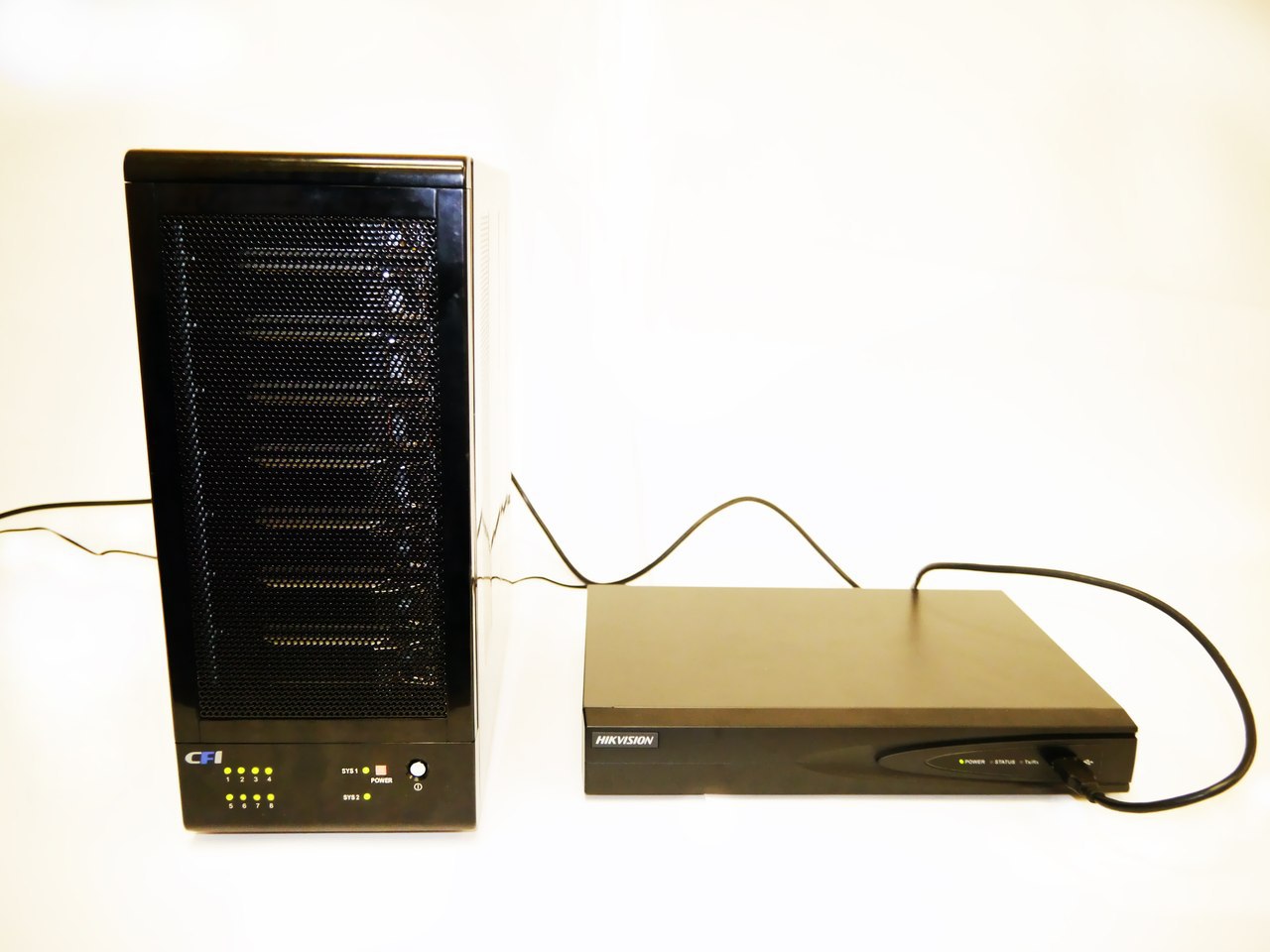
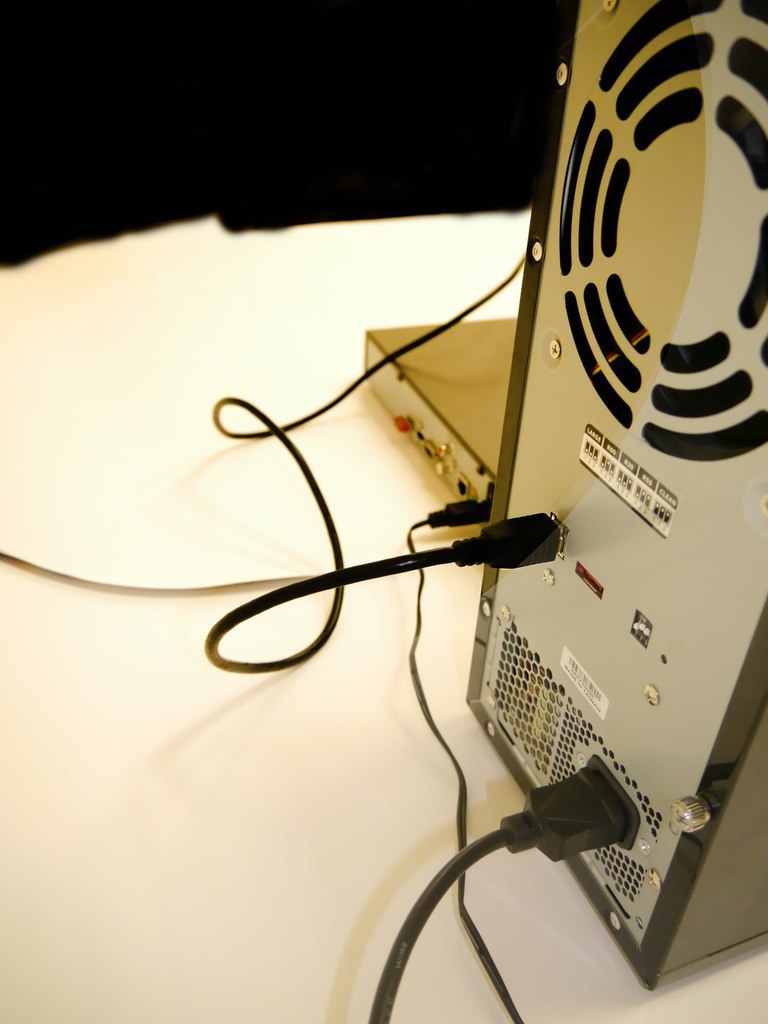
I think you can skip the primitive setup of the registrar, since the purpose of the article is to expand the archive, and even a child can press the "next" button. After connecting DAS to the recorder via USB in RAID modes (1,5,10,50), we can see the following:
PS: I’m sorry, but unfortunately the recorder is HDCP protected and my blackmagic video capture card could not bypass the protection, so I had to take pictures on the "iron".
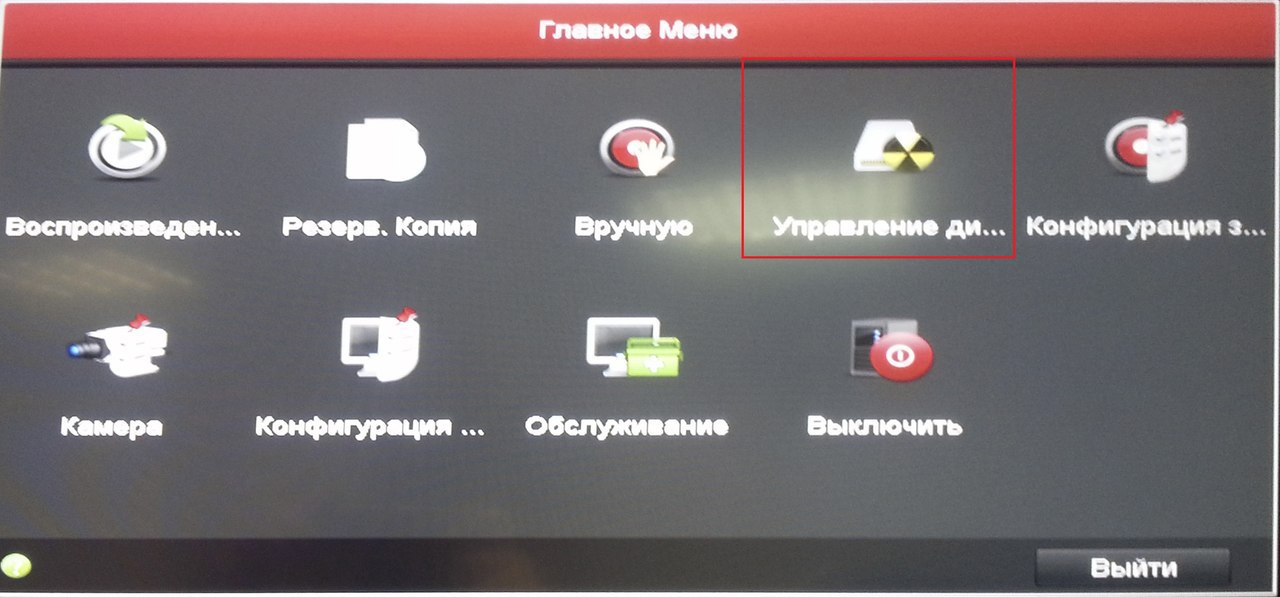
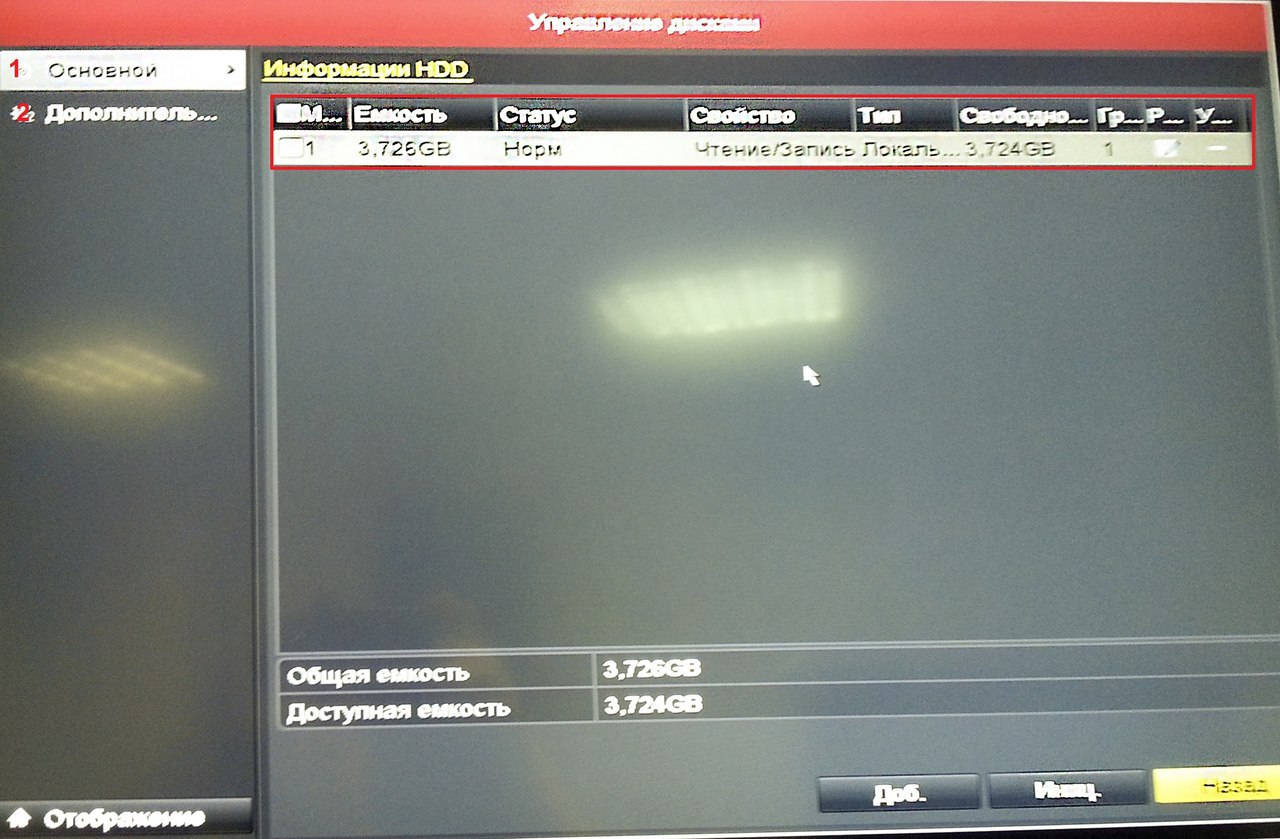
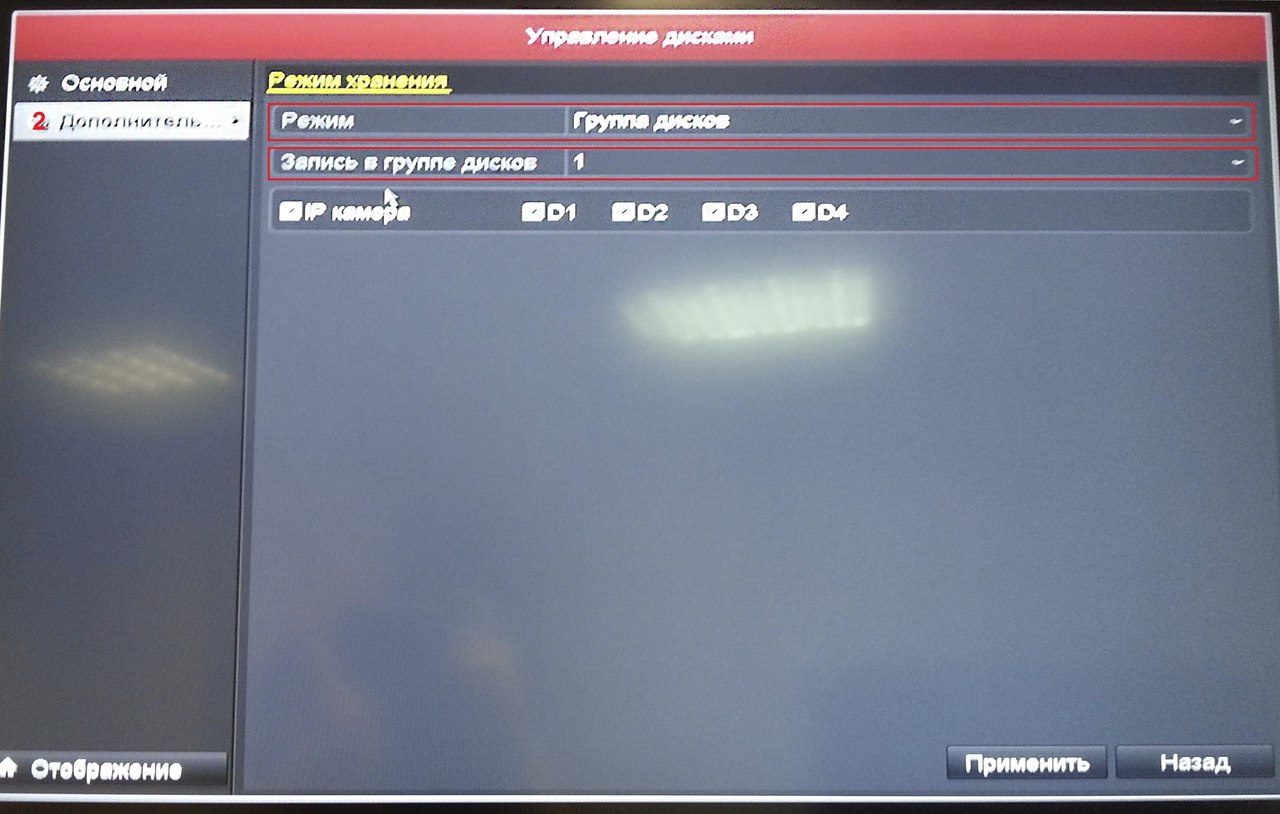
On these "screenshots" you can see: 1. Information about the main HDD. 2. Section of additional HDDs (they are also external via USB). Here we can select the disk groups where we will record our archive from the selected channels (D1, D2, D3, D4). Unfortunately, the tested NVR does not support Port Multiplier and the ability to work with individual disks (CLEAN mode) is not available, but despite this we provided the archive backup with a protected RAID array from CFI. I note that the registrar can display us SMART ordinary hard drives.
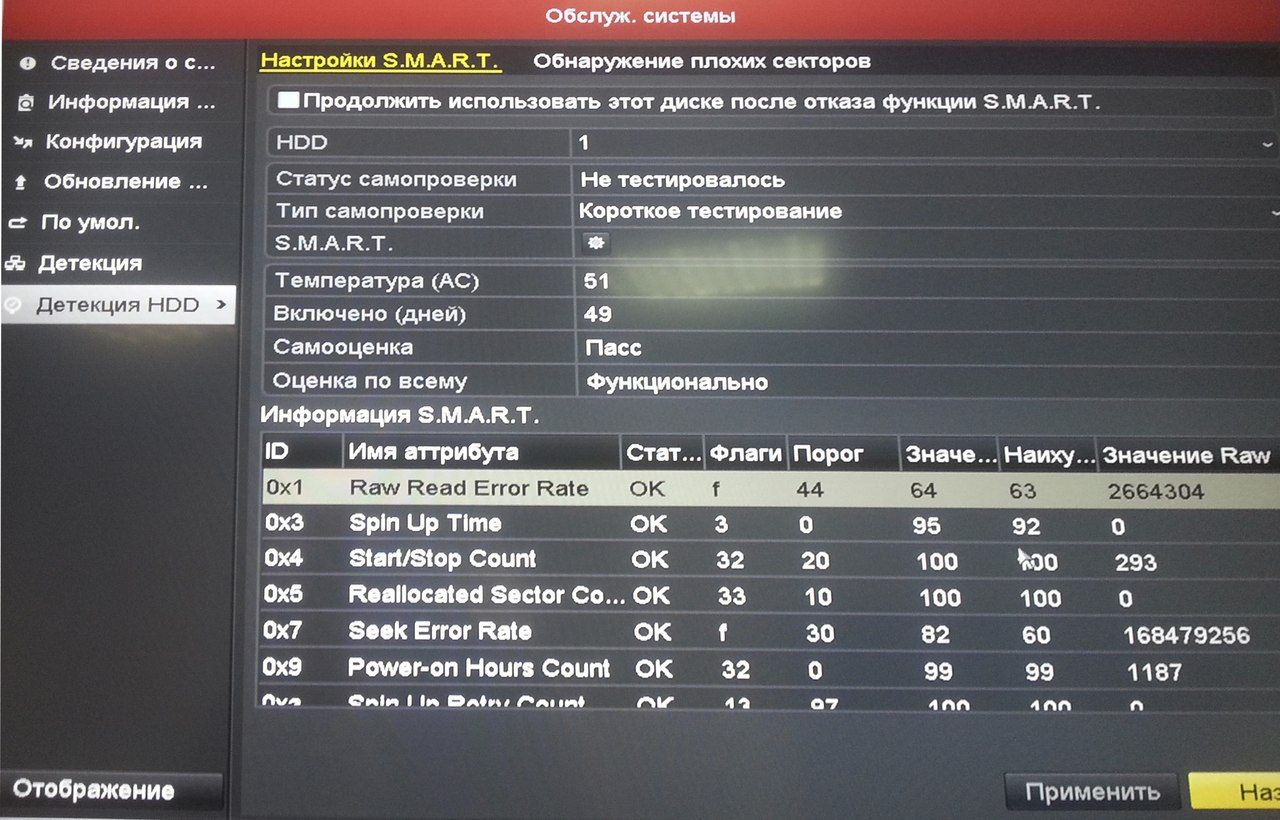
Here we can choose our main HDD or our group of drives. Note: CFI-B8283JDGG devices cannot display SMART due to more complicated technical implementation using the optional JMicron JMB391 controller.
Now about the cost. At the time of work on the material, this drive could be purchased in the region of 15,000 rubles, while an 8-disk NAS would cost us at least 40,000 - 50,000 rubles. At the same time, we got the disk capacity, which became directly available for recording to our inexpensive NVR, as in a professional device for multi-money. The experiment showed that the NVR writes beautifully to external capacity.
It is clear that in our case it is not required to reserve and expand the storage volume of all the functions of modern NAS, and, therefore, why pay more?
Here is a budget and very simple solution to the problem of expanding the network NVR and DVR digital video recorders.
limitation: “budget”. As a result, our desires to keep archives for 30-60 (and this is almost 30-40Tb) days turn into a "pipe dream". Ideally, I would like the archive to be backed up automatically without a chronic dilemma whether there will be enough space for the next backup on a USB-HDD or not. The presence of this dilemma is especially annoying, since in the long run the process can turn into a lottery: you believe that the backup passed, but it did not start as the external single disk was full for a long time.
The second side of the problem: in most DVRs, a fault-tolerant storage (RAID) system is simply not provided, and each disk lives “its own life” for good luck, until it leaves it, taking with it part and even the entire video archive. For some reason, the manufacturers of NVR / DVR consider RAID a redundant function even for a professional entry-level and mid-range DVR, probably believing that the video archive is of little value. However, its low value and recording in a circle in a small time loop is good exactly as long as everything is smooth on the object. And when “no”, then, as a rule, there is no “trial” because there is no evidence left either - it was rewritten in the next cycle or lost due to the failure of one of the disks. Even according to my personal statistics, hard drives are one of the most vulnerable parts of NVR and DVR.
Yes, in older NVR models with 8 or more disks, we will most likely see RAID and redundancy features. BUT! even in this case, the question remains where to reserve, for example, an 8-disk NVR? It is possible on an 8-disk NAS and here the question of price!
Despite the general problem of hardness of hardness and the high cost of multi-disk network storages, an affordable and quite practical and simple solution was nevertheless found. It was enough just to explore alternatives from non-frontal options.
This decision will be discussed later, using the example of working with the popular NVR HIKVISION DS-7604NI-SE . Our NVR will play the role of a locomotive, and the capacity expansion module (DAS) of the CFI B8283JDGG company as the composition of cars with disks (8 disk model) with support for simple and convenient hardware RAID.
For those who are not familiar with the NVR HIKVISION DS-7604NI-SE, get acquainted

Specifications
- Recording up to 5 megapixels
- Support for third-party cameras (e.g. Zavio)
- Disk quota management
- HDMI and VGA outputs with resolutions up to 1920 × 1080p
- Recording / Playback Resolution 5MP / 3MP / 1080P / UXGA / 720P / 4CIF / VGA / DCIF / 2CIF / CIF / QCIF
- Audio Output 1 channel, RCA (Linear, 1 kOm)
- Stream Type Video / Video and Audio
- 4-channel synchronous playback
- SATA 2 SATA Hard Drive (Up to 4 TB each) External Interfaces
- Network Interfaces 1, RJ45 10M / 100M / 1000M Ethernet Interface
- Transmission Interface 1 RS-485 Interface
- USB interface 2, USB2.0
- Alarm inputs / outputs 4/1 (optional) General Power supply 100 - 240 V
- AC Power consumption up to 15W (Without hard drives and DVD drives)
- Operating conditions -10 ° C— + 55 ° C
- Size 445 x 290 x 45 mm
- Weight less than 2 kg (Without hard drives and DVD drive)
This NVR is a very typical product, the use of which can probably be identified with the concept of "NVR in general", assuming that any other will work with external RAID-capacity similarly or similarly.
In general, I learned about CFI DAS not so long ago, partly from other people's posts on habr, partly studying the question of whether there can be something from USB / eSATA for more than 2 disks. It turned out that there are such devices.
A field note for those who are interested: DAS (Direct Attached Storage) is a generalized concept of a class of devices and, at the same time, a technology for connecting a drive directly to a host device to increase storage capacity. When connected to an NVR, DVR, PC, or a DAS server with RAID support, it actually functions sooooo big and, I want to believe, soooooo secure flash drive. CFI B8283JDGG is based on a hardware RAID controller. My 8-disk DAS in the CFI implementation (Taiwan office) is actually a SATA basket with an integrated power supply and electronics for port animation, hardware support for RAID of different levels (by the way with caching ) and eSATA and USB 3.0 port services. Actually using them, the drive is connected to the hosts.
In fairness, for a closer acquaintance, we will also introduce the characteristics of the CFI B8283JDGG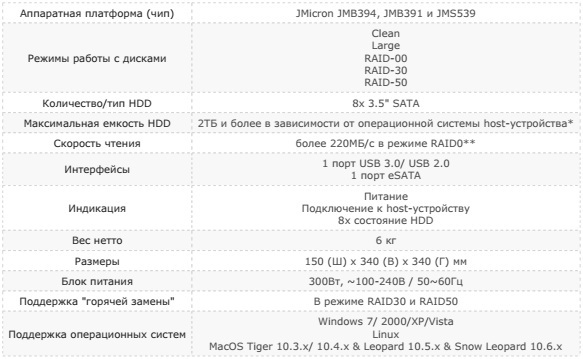

And now the arguments - why I chose this drive to solve the problem. To begin with, DAS - it's very simple - stuck and working, switching the RAID mode by dip switches. At the same time, it should be reliable, because it is a hardware RAID array. The fault tolerance of the storage is implemented here by means of a microcontroller, and not some software (in no case do I "throw a stone in the garden" of software RAID implementations). As a result, almost complete independence of the device from external influences and host devices is achieved. At the same time, there are no hardware limitations on the disk size, but you need to coordinate this with the capabilities of the OS and the hardware of the host platform to which the DAS will be connected; theoretically, the volume can be so large that the host device simply does not understand the storage connected to it. The second argument for me was the speed of data exchange. In normal operation, an exchange of about ~ 225MB / s is achieved (Depending on your disks and RAID configuration, of course). You understand that at such a speed, reserving an average NVR or DVR takes a matter of minutes. Thirdly, the drive supports hot-swappable drives. As a result, even if you encounter a defective hard drive or fail over time, it can be replaced without stopping the host device or the DAS itself. Just take it out and insert a new one, after which the system will automatically rebuild the storage array. Neither your nerves nor your data will suffer,
And now we turn from theory to practice. I connected a CFI drive to the HIKVISION dashcam. In my case, the NVR HIKVISION is equipped only with a USB port, and through it I connected both devices. In this experiment, we used HDD from Seagate, Constellation ES.3.


I think you can skip the primitive setup of the registrar, since the purpose of the article is to expand the archive, and even a child can press the "next" button. After connecting DAS to the recorder via USB in RAID modes (1,5,10,50), we can see the following:
PS: I’m sorry, but unfortunately the recorder is HDCP protected and my blackmagic video capture card could not bypass the protection, so I had to take pictures on the "iron".



On these "screenshots" you can see: 1. Information about the main HDD. 2. Section of additional HDDs (they are also external via USB). Here we can select the disk groups where we will record our archive from the selected channels (D1, D2, D3, D4). Unfortunately, the tested NVR does not support Port Multiplier and the ability to work with individual disks (CLEAN mode) is not available, but despite this we provided the archive backup with a protected RAID array from CFI. I note that the registrar can display us SMART ordinary hard drives.

Here we can choose our main HDD or our group of drives. Note: CFI-B8283JDGG devices cannot display SMART due to more complicated technical implementation using the optional JMicron JMB391 controller.
Now about the cost. At the time of work on the material, this drive could be purchased in the region of 15,000 rubles, while an 8-disk NAS would cost us at least 40,000 - 50,000 rubles. At the same time, we got the disk capacity, which became directly available for recording to our inexpensive NVR, as in a professional device for multi-money. The experiment showed that the NVR writes beautifully to external capacity.
It is clear that in our case it is not required to reserve and expand the storage volume of all the functions of modern NAS, and, therefore, why pay more?
Here is a budget and very simple solution to the problem of expanding the network NVR and DVR digital video recorders.
